The age of the pod car might be upon us, but not necessarily as the long-envisioned Personal Rapid Transit. Good for amusement parks and Google’s main campus, as well as small newly-built cities or airport shuttles, PRT systems have too many limitations in dense urban areas. The real future for the pod car, like it or not: Autonomous (Self-Driving) Vehicles.
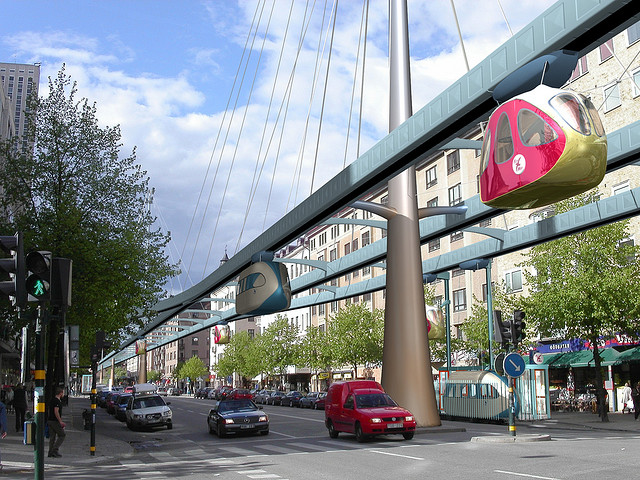

These Pedal-Powered Pod Cars Travel Above City Streets, So You Can Avoid Traffic
By Adele Peters, Published in Fast Co.Exist
Why drive to work when you can arrive in your own pedal-powered pod car, far above traffic? That’s the vision of a Canadian company called Shweeb, which hopes to soon begin installing what it calls the “most sustainable form of public transit” in cities around the world.
Hanging from rails up to 80 feet above the street, the Skysmart system uses a series of personal pods that run on either solar power or pedaling from the passengers inside. Unlike a train or bus, users can hop on immediately without waiting on a platform.
“It can move 10,000 people per hour with tremendous efficiency,” says Stephen Bierda from Shweeb. “What happens with conventional transit is it’s not on demand, so you have to plan your arrival at the station, and there are a lot of stops. That means your average speed is slower.”
STORY: Place Mobility: Streetcars, Bus Rapid Transit and Light Rail
Pod cars [also know as Personal Rapid Transit or PRT] are autonomous vehicles that provide on-demand nonstop travel on overhead tracks. Think horizontal elevators, or of the monorail at Disneyland. They carry two to 10 people, providing a level of privacy and security not found with traditional mass transit. Such a system, advocates say, also provide the convenience of automobiles without the hassle. — Dave Demerjian, Wired
Skysmart is also designed to provide a little exercise on the way to work. “You don’t have to pedal,” Bieda says. “But we want to gamify this and incentivize people to stay fit. We’ll let people pay less if they pedal, and allow people to travel six miles an hour faster. It’s a pretty good bonus to get people to interact on the pod.”
The pods come in different sizes that can hold two, five, or 12 people, and can also be connected to carry packages or other cargo. The guideways that hold the cars can also double as carriers for power lines and cables. “We’ve envisioned the guideway that the pod runs on to become a conduit for all things electrified,” Bierda says. “It’s a multi-purpose piece of infrastructure.”
As more people use the PRT system, it becomes less able to accommodate individual demand for destinations, which renders it more of a traditional rail transit system—but without enough capacity to handle rush-hour crowds. Meanwhile, the direct-to-destination element still can’t beat the door-to-door service offered by taxi networks. In other words, personal rapid transit reproduces modes that already exist in the city, only less effectively. — Eric Jaffee, CityLab
Cyclists can throw a bike in the back of a pod, and ultimately, the company believes that the system will make it easier to bike on the ground by getting cars off the road. “It’s 3-D transport,” Bierda says. “That leaves the surface level—streets and sidewalks—for people to walk and cycle on.”
A five-station PRT system in Morgantown, West Virginia (population 29,361) has ferried people between downtown and the West Virginia University campus since 1979. It carries as many as 16,000 people a day and has never experienced a major accident. — Wired
The system is at least 30% cheaper to build than other mass transit infrastructure, and fully renewably powered. It can also be tied to the grid to feed excess electricity back to the city. “We envision this as a public utility,” Bierda explains. “If it’s run like a utility, that also helps secure the air rights to build over streets, and parks, and parking lots.”
STORY: Electric Streetcars: Back to the Urban Future
Once autonomous vehicles learn to navigate cities, they will offer every advantage of personal rapid transit without any of the limitations. In fact, cities that might once have deployed personal rapid transit have already turned to driverless cars, from Ann Arbor, Michigan, to Milton Keynes in the United Kingdom. An era of shared autonomous taxis is not far off. — Eric Jaffee
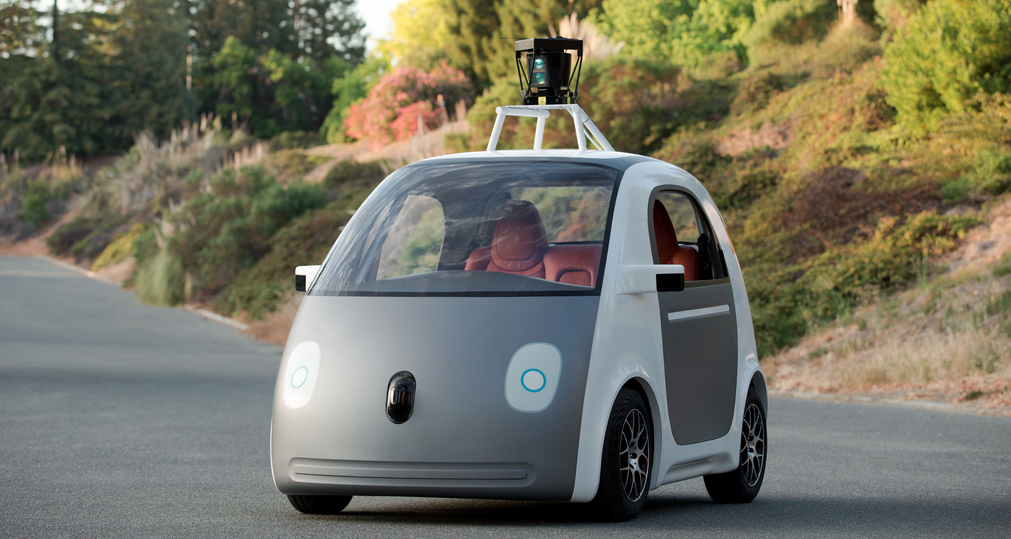

First built for an amusement park in New Zealand, the pod car system won $1 million in Google’s 10^100 competition in 2010 for further development as a form of alternative transportation. The system will use tech from Google’s robocars to track the pods, and Google’s Mountain View campus will be one of the first to build a track. Some 22 other customers are also waiting in line.
httpvh://youtu.be/7PyUQuWmt2M
ULTra is a battery-driven, 200-mpg-equivalent, elevated personal rapid transit system with many four-person vehicles. First deployed at London Heathrow Airport in Spring 2010.
The big question is whether something like this can really take off; planners started talking about personal rapid transit systems in the 1950s, but the idea hasn’t had much success. Shweeb plans begin building a demonstration site at Niagara Falls next year, to show cities exactly how the system can work, and then push for broader adoption.
“Transit authorities tend to be very slow to adopt, and they’re running up against a lot of political pressure to find ways to fund infrastructure,” Bierda says. “Our solution, because it’s lower cost, because it’s carbon neutral, because it’s providing human health benefits, this is the game-changer that will resonate. And we’re starting to see transit authorities looking at us as a viable way of changing the discourse on public transportation.”
The company is currently raising funds on Indiegogo to help build their first North American system.
httpvh://youtu.be/CqSDWoAhvLU
Self-Driving Car From Google
More Info on a New Jersey Version of the Pod Car: http://www.fastcolabs.com/3034687/new-jersey-is-testing-solar-power-commuter-pods



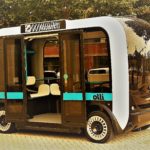

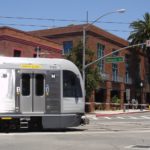
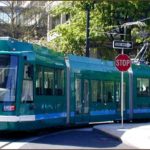






I am thinking that this kind of system has not propagated is that the USER is necessarily the captive of a limited common-purpose spatial arrangement — such as connecting student/faculty populations at geographically dispersed university campus or Google egg-heads bouncing around incubator hives nestled in a woodsy campus landscape, or highly homogeneous isolated communities, like in New Zealand, or entertainment-oriented “move on to the next showcase” tourist crowds, such as amusement parks. Or maybe prisoners in a vast labor camp…. This doesn’t seem to lend itself to semi-autonomous lifestyles in the typically more alienated metropolitan landscape. Walking seems to work, though….
PRT is among the lowest cost per seat mile, ton mile or delivery unit stop. There are thousands of PRT sysyems basic design possibilities compared to much smaller possibilities accepted for road, rail, air and water born systems.
Why not design to the meeting of all transportation requirements in one globally connected grid?
Have you ever tried to solve all mobility requirements with one systems design? List the requirements and design to meet them. If you can npt figire yhis out just call and I will help you through the detsils and optional solutions. You might be able to add to the list of things to do.
Jim Burden, 402-416-6235
Pingback: Stopping West Coast Tar Sands Oil Bomb Trains in Their Tracks
Pingback: Tar Sands Oil "Bomb" Trains Proposed For California | WilderUtopia.com
Pingback: Autonomous Cars Will Drive Sustainable Cities Backward | WilderUtopia.com
Hauling freight, irrigation water, business to house deliveries, general mail and parcels delivery, construction materials and recycling all refuse even dewatered condensed waste construction rubble removal and materials and commodities deliveries using self lowering vehicle pods or bodies to every property. No stations are required if low traffic stop on line access grids door to door not station to station. This can all hapen at jet aircraft speeds in trains of minimum under 18 square foot frontal area vehicles in longer self in motion assembling trains to reduce the indicidual drag of each vehicle to about .5 KWH per mile. As the speed and length of average trains increases between cities even in cross tow trips fewer vehicles are needed to service out all user needs. No trucks, cars, railways, aircraft, ships are ever sgain needed because suspended ocean tubes can be exteuded out and anchored connecting all the continets at less than the cost of land based freways and railways. This replaces all other forms of transportation with a single system. People ride in moveable sized and seating arrangement compartments in the same tiny frontal area Skytran sized vehicles, separated by curtain walls from other clean uses carried to door to door, city to city, world wide requires all purpose not specialzed vehicles on light weight low cost supended monorail PRT vehicle guideways with low interference drag. Steel micro gear rim drive wheel motors in small dick guidewheel designs limit bearing speed to 9500 RPM at 650 MPH with on meter or three foot diameters. Chained wheel motor running fear frontal area including suspension is under two square feet a a drag coeficient of about .06 .
Jim Burden 402-416-5235